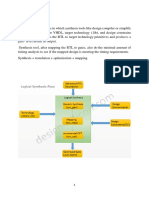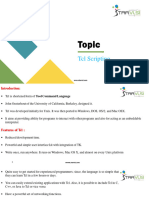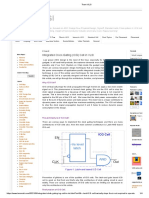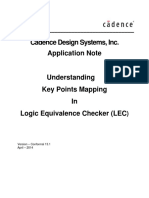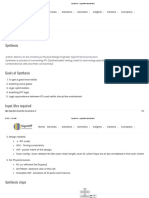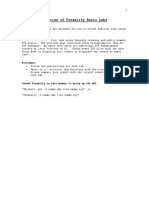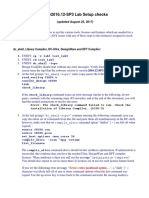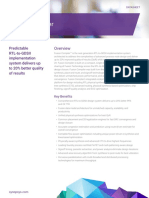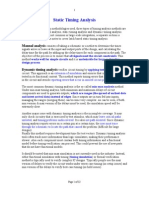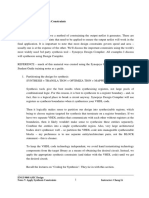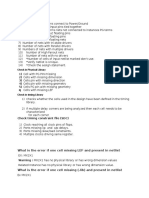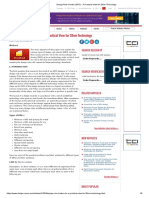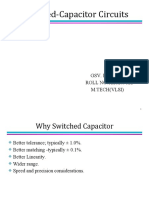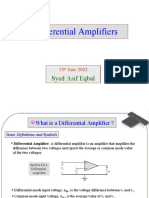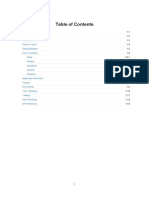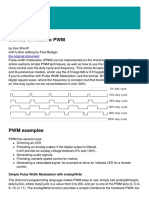100% found this document useful (1 vote)
518 views39 pagesIntroduction To Synthesis
1. Setup the target technology environment by specifying libraries.
2. Read and elaborate the RTL design. This builds the design structure.
3. Check the design for issues and specify timing and other constraints.
4. Perform logic optimization, technology mapping, and other optimizations to the design.
5. Generate an optimized gate-level netlist and output files for implementation.
Uploaded by
Jayanth bemesettyCopyright
© © All Rights Reserved
We take content rights seriously. If you suspect this is your content, claim it here.
Available Formats
Download as PPT, PDF, TXT or read online on Scribd
100% found this document useful (1 vote)
518 views39 pagesIntroduction To Synthesis
1. Setup the target technology environment by specifying libraries.
2. Read and elaborate the RTL design. This builds the design structure.
3. Check the design for issues and specify timing and other constraints.
4. Perform logic optimization, technology mapping, and other optimizations to the design.
5. Generate an optimized gate-level netlist and output files for implementation.
Uploaded by
Jayanth bemesettyCopyright
© © All Rights Reserved
We take content rights seriously. If you suspect this is your content, claim it here.
Available Formats
Download as PPT, PDF, TXT or read online on Scribd
/ 39




